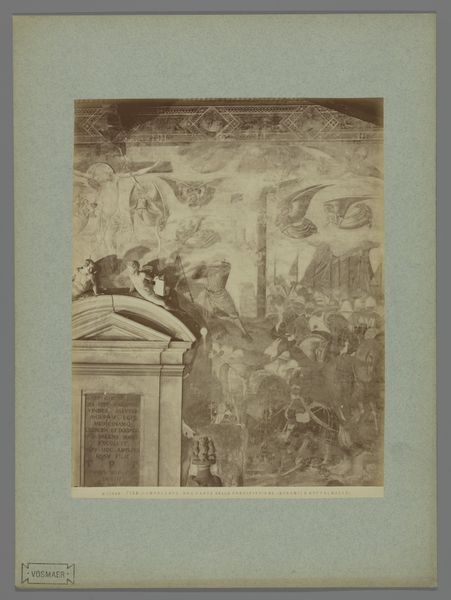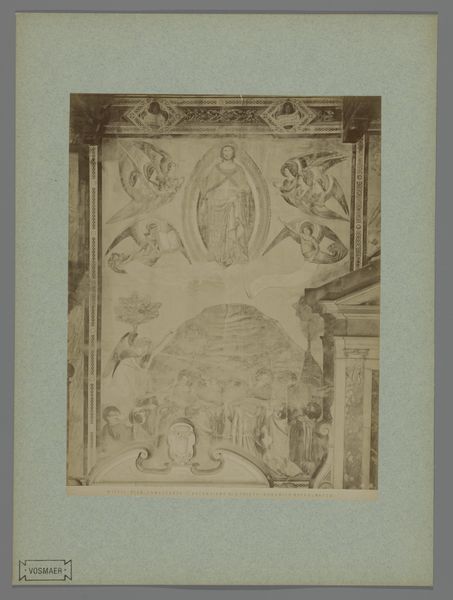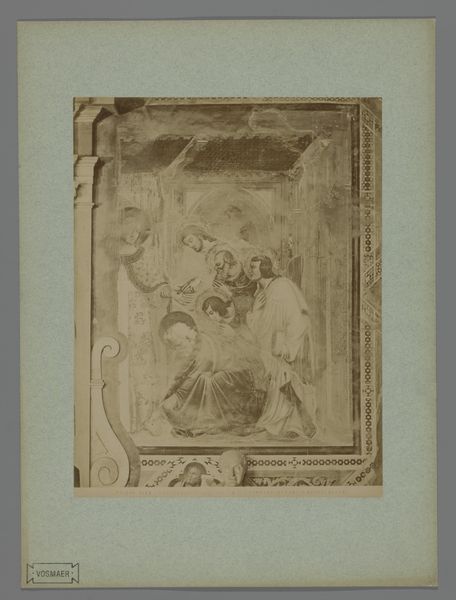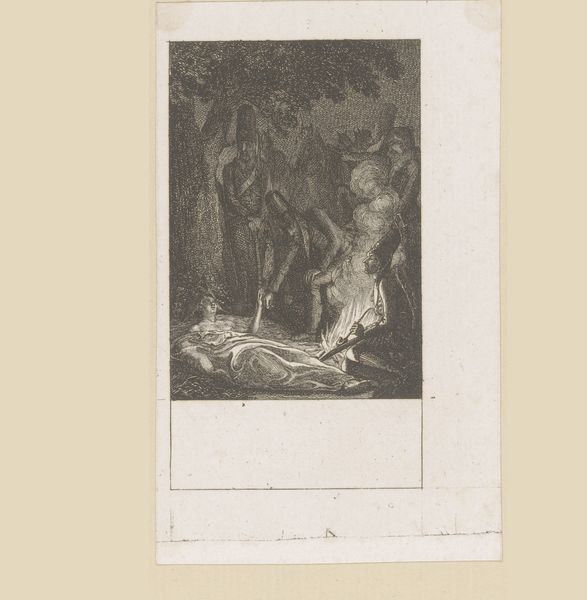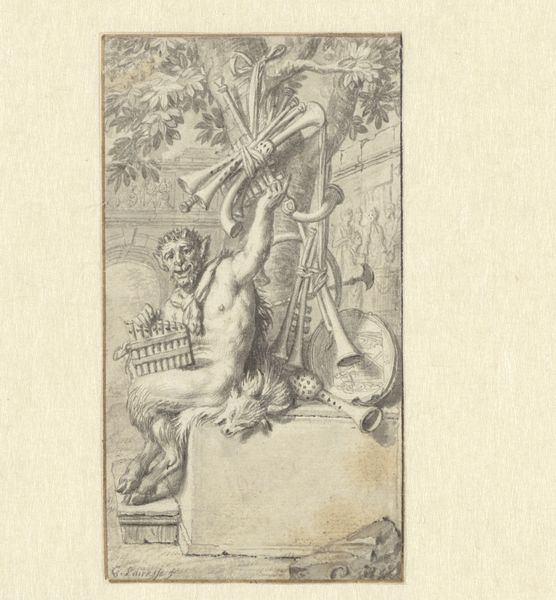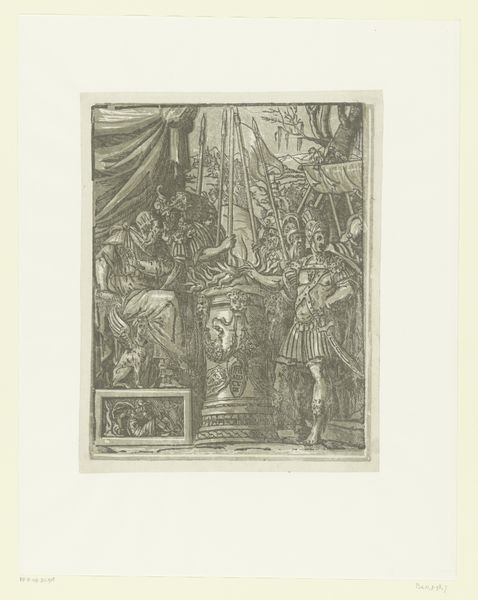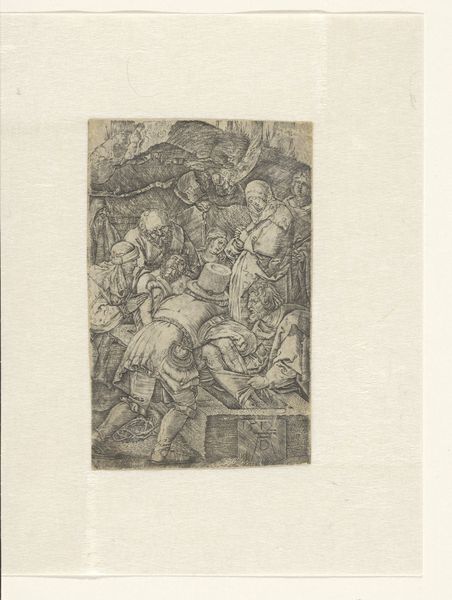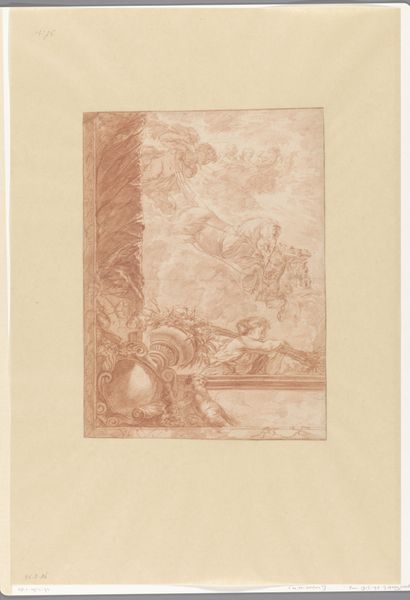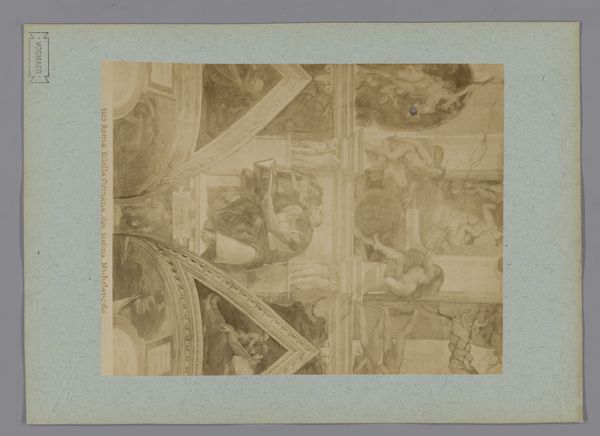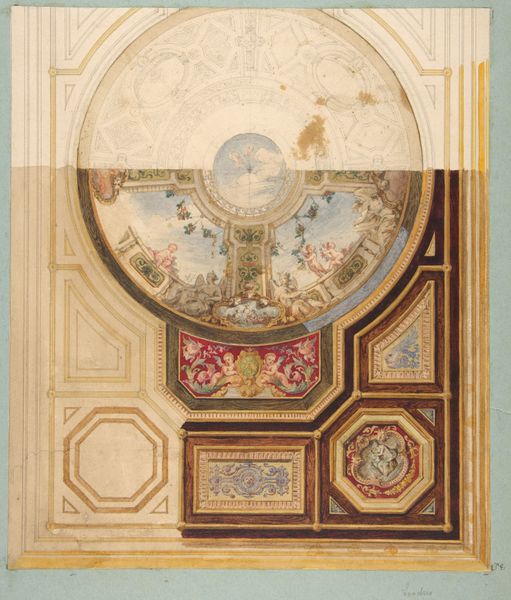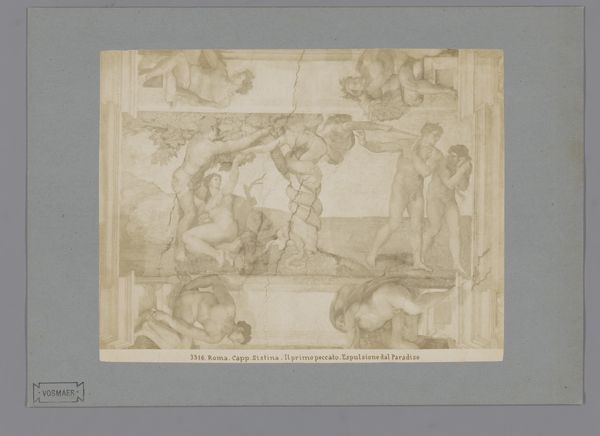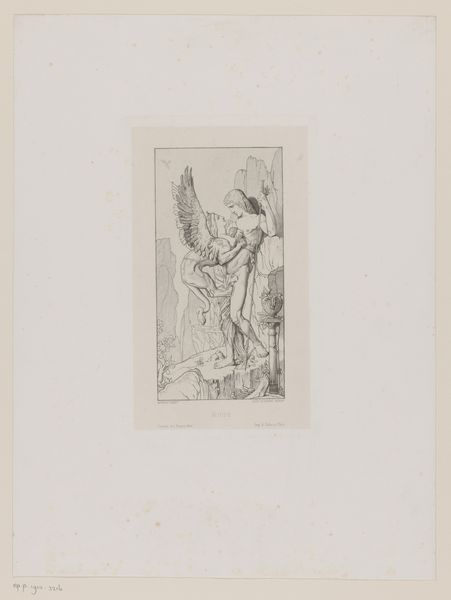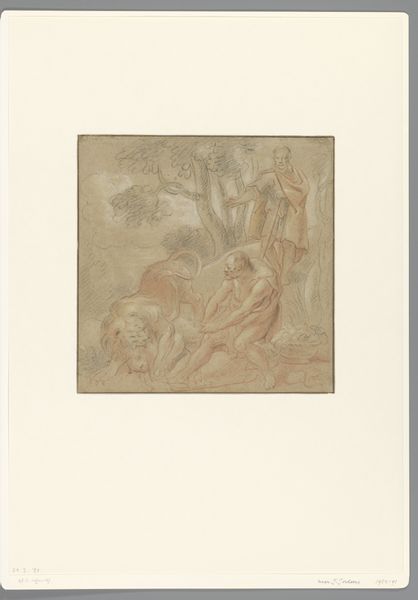
Fotoreproductie van een deel van het fresco Kruisiging door Buffalmacco in het Camposanto te Pisa, Italië 1852 - 1900
0:00
0:00
print, fresco, photography, gelatin-silver-print
#
narrative-art
# print
#
fresco
#
photography
#
gelatin-silver-print
#
history-painting
#
italian-renaissance
Dimensions: height 242 mm, width 186 mm, height 354 mm, width 260 mm
Copyright: Rijks Museum: Open Domain
Curator: This gelatin-silver print, likely produced sometime between 1852 and 1900 by Fratelli Alinari, offers a photographic reproduction of Buffalmacco's fresco, "Crucifixion," found in the Camposanto in Pisa, Italy. It’s a narrative swirling in layers of history. Editor: What strikes me is the texture. Even through the photographic reproduction, you feel the aged surface of the fresco—a roughness that conveys the weight of centuries of faith, violence, and maybe even indifference. Curator: Yes, it's compelling. As an iconographer, what visual cues stand out for you within this particular segment of the fresco? Editor: Those fierce, stylized angels above the cross, their expressions…anguish bordering on rage. They embody the cosmic disruption of the event, don’t they? Then below, the chaotic grouping of mourners versus what seems to be more stoic figures—an echo of human reactions to mortality, then and now. Curator: The Renaissance was a period of rediscovery of classical forms, but also a time of deep religious faith. Buffalmacco seems to weave these contrasting elements—idealized figures in moments of raw, human grief. Does the photograph mute or amplify those aspects in your opinion? Editor: Perhaps the photograph does mute the color, making it difficult to separate the image from the violence, and bringing the viewer face-to-face with the cost, sacrifice and pain of this scene. Stripping away the bright hues highlights a more timeless aspect of suffering. The emotion is carried by composition and texture more than colour. Curator: It’s fascinating how a photographic document can shift our relationship to a much earlier artwork. What do you make of this piece overall? Editor: The fresco seems more like a record of human resilience—not only within the depicted narrative but also in the continued attempt to grasp with symbols our anxieties and expectations of divinity, hope and peace, even in what is arguably art about incredible pain. Curator: I think it's also the interplay of faith, and an artistic record of looking closely at our world - a balance always shifting. This photograph provides us with the perspective to reconsider that relationship with faith, humanity and death across time.
Comments
No comments
Be the first to comment and join the conversation on the ultimate creative platform.
